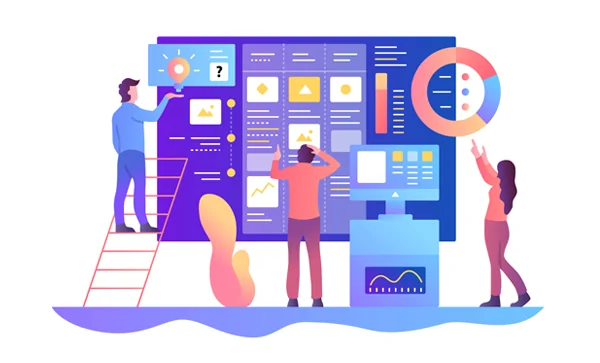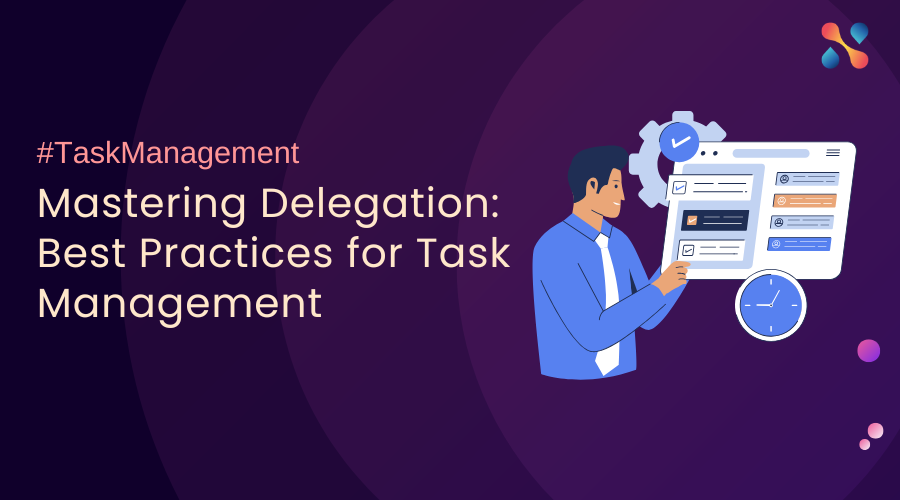While Agile has revolutionized project management with its emphasis on flexibility and responsiveness, it often encounters resistance and misunderstandings that can undermine its effectiveness. This is particularly true in traditional corporate environments, where the shift from hierarchical structures to more collaborative, self-organizing teams can be challenging.
So, why do many organizations struggle with Agile, and what makes Pragmatic Agile a compelling alternative?
Agile has been both a beacon of hope and a source of frustration for organizations worldwide. Originally conceived as a flexible, adaptive approach to software development, Agile has since permeated various industries, promising increased productivity, improved quality, and enhanced customer satisfaction. Yet, as we stand at the crossroads of its evolution, a paradox has emerged: while Agile adoption continues to grow, so does the chorus of dissatisfaction and criticism.
This paradox presents a unique challenge for modern organizations. On one hand, the principles of Agile – flexibility, collaboration, and iterative progress – seem tailor-made for today’s fast-paced, unpredictable business environment. On the other hand, the implementation of Agile methodologies often falls short of expectations, leaving teams disillusioned and executives questioning its value.
What many fail to recognize is that this disconnect isn’t necessarily a failure of Agile itself, but rather a symptom of a deeper issue: the rigid application of a flexible methodology. The irony is palpable – in our quest to embrace agility, we’ve often created new forms of inflexibility.
Pragmatic Agile emerges as a nuanced approach that respects the core principles of Agile while addressing its common pitfalls. Agile’s appeal lies in its promise of continuous delivery and adaptability, yet these strengths can also become its weaknesses if not properly managed. For instance, the iterative nature of Agile can lead to a lack of long-term vision, causing teams to focus too much on immediate outputs rather than strategic goals. Moreover, the absence of rigid frameworks and extensive documentation, while promoting agility, can sometimes result in ambiguity and misalignment, especially in complex projects or larger organizations.
Pragmatic Agile steps in as a solution that blends flexibility with the necessary structure, ensuring that Agile principles are applied in a way that is both practical and effective. It acknowledges the criticisms of traditional Agile methodologies—such as potential burnout, inconsistent quality, and tool overload—and offers a balanced framework that prioritizes outcomes over strict adherence to any particular methodology. This approach not only helps in overcoming cultural resistance and scaling challenges but also aligns Agile practices with the broader strategic objectives of an organization. By addressing these often overlooked aspects, Pragmatic Agile provides a more sustainable and adaptable path for teams navigating the complexities of modern project management.
The Promise and Reality of Agile
The Agile Manifesto, penned in 2001, heralded a new era in project management, particularly in software development. Its core principles promised a more responsive, customer-centric approach to creating products and services. Let’s examine the initial promise of Agile and contrast it with the reality many organizations face today.
The Agile Promise
Agile methodologies offered a compelling vision:
☑ Rapid Delivery: Frequent releases and iterative development cycles.
☑ Adaptability: Quick responses to changing requirements and market conditions.
☑ Customer Satisfaction: Continuous engagement and feedback from end-users.
☑ Team Empowerment: Self-organizing teams making decisions at the point of execution.
☑ Quality Focus: Built-in quality assurance through practices like test-driven development.
The Current Reality
While some organizations have reaped the benefits of Agile, many others have encountered a different reality:
☑ Partial Implementation: Adoption of Agile practices without fully embracing the mindset.
☑ Scalability Struggles: Difficulties in applying Agile principles across large, complex organizations.
☑ Cultural Misalignment: Resistance from traditional hierarchies and management structures.
☑ Measurement Challenges: Difficulty in quantifying and communicating Agile’s value to stakeholders.
☑ Tool Overemphasis: Over-reliance on Agile tools at the expense of principles and values.
The Expectation Gap
This disparity between promise and reality has created an expectation gap. Organizations invest in Agile transformations expecting dramatic improvements, only to find themselves grappling with new challenges. This gap isn’t merely a matter of failed implementation; it reflects a fundamental misunderstanding of Agile’s nature.
Agile isn’t a silver bullet or a one-size-fits-all solution. It’s a set of principles that require thoughtful adaptation to each unique organizational context. The reality is that successful Agile implementation demands more than just following a prescribed set of practices—it requires a holistic transformation of mindset, culture, and processes.
As we move forward, it’s crucial to recognize that bridging this expectation gap is not about abandoning Agile principles, but about evolving our approach to make Agile work in the complex realities of modern organizations. This is where the concept of Pragmatic Agile becomes invaluable, offering a path to realizing Agile’s promise while acknowledging and addressing the challenges of its implementation.
Challenges in Implementing Agile in Organizations
Agile methodologies promise a flexible and efficient approach to project management, but they are not without challenges when it comes to implementation. One of the most significant hurdles is cultural resistance and mindset shifts. Traditional organizations often operate within hierarchical structures that prioritize control and predictability. Transitioning to Agile, which emphasizes self-organizing teams and adaptive planning, can be met with skepticism and resistance from both employees and management. This resistance is not just about changing processes but requires a fundamental shift in mindset—a move from valuing detailed upfront planning to embracing uncertainty and change as natural elements of the development process.
Another common issue is the lack of understanding of Agile principles. Agile is sometimes misconstrued as a lack of planning or discipline, leading to its misapplication. Without a deep understanding of Agile values and principles, organizations may implement Agile superficially—adopting rituals like daily stand-ups and sprints without grasping the underlying philosophy. This can result in what is known as “Cargo Cult Agile,” where the form is present, but the substance is missing. Inadequate training and coaching exacerbate this problem, leaving teams ill-prepared to fully leverage Agile methodologies.
Inconsistent practices within organizations also pose a significant challenge. As organizations grow or merge Agile with traditional methods, a hybrid approach can emerge. While hybrid models can offer flexibility, they can also lead to inconsistency and confusion. Different teams might interpret Agile practices differently, causing a lack of alignment across the organization. This inconsistency can be particularly problematic when scaling Agile, as coordination and standardization become critical to maintaining coherence and efficiency across multiple teams and projects.
The scaling of Agile across large enterprises brings its own set of difficulties. Large organizations often have diverse teams with varying levels of Agile maturity. Ensuring consistent practices and coordination among these teams requires strong leadership and governance. Without this, scaling Agile can lead to fragmentation and a dilution of Agile’s core benefits. Additionally, middle management often feels threatened by the decentralized decision-making inherent in Agile, leading to resistance. This lack of management support, especially from middle management, can stymie Agile adoption, as these managers are crucial in bridging the gap between strategic objectives and day-to-day operations.
Finally, the challenge of metrics and reporting cannot be ignored. Traditional project management relies heavily on specific metrics and KPIs that may not align with Agile’s iterative and flexible nature. Developing new metrics that accurately reflect Agile performance and progress is complex but necessary for measuring success. Without appropriate metrics, it becomes challenging to justify Agile practices to stakeholders accustomed to more conventional forms of measurement.
Pragmatic Agile addresses these challenges by providing a structured yet flexible framework that respects the unique needs and constraints of each organization. This approach not only facilitates smoother transitions to Agile practices but also ensures that these practices are sustainable and aligned with broader organizational goals.
Criticisms of Agile Methodology
While Agile has been lauded for its adaptability and responsiveness, it has not been without criticism, particularly in the last decade. These criticisms often stem from misconceptions or misapplications of Agile principles, as well as challenges inherent to the methodology itself.
Overemphasis on Flexibility
One of the most common criticisms is Agile’s perceived overemphasis on flexibility, which can sometimes lead to:
☑ Lack of Documentation: Agile’s focus on “working software over comprehensive documentation” can be misinterpreted as a disregard for documentation altogether. This can result in unclear requirements and lack of traceability, making it difficult to onboard new team members or hand over the project.
☑ Scope Creep: The iterative nature of Agile, while beneficial for adaptability, can lead to uncontrolled scope changes. Teams may continuously add features without adequate consideration of the project’s overall goals and constraints, leading to delays and budget overruns.
Misapplication and Misunderstanding
Agile’s flexibility is also its Achilles’ heel when not properly understood or applied:
☑ Cargo Cult Agile: Some organizations adopt Agile rituals—such as daily stand-ups or sprints—without fully understanding or implementing the underlying principles. This superficial adoption often results in ineffective practices that do not yield the desired benefits of true Agile transformation.
☑ Inadequate Customization: Not all projects are suited to Agile methodologies. For instance, projects that require detailed upfront planning or have stringent regulatory requirements may struggle with Agile’s iterative approach. Misapplying Agile in these contexts can lead to inefficiencies and compliance issues.
Burnout and Stress
The Agile focus on continuous delivery and iteration can create a high-pressure environment:
☑ High Pressure: The relentless pace of delivering increments can lead to burnout among team members. The expectation to consistently produce results without adequate breaks can be unsustainable over long periods.
☑ Pace Management: Agile teams often struggle with maintaining a consistent and sustainable pace, particularly when faced with tight deadlines or complex project demands.
Focus on Short-Term Goals
Agile’s iterative cycles prioritize immediate results, sometimes at the expense of long-term planning:
☑ Neglecting Long-Term Strategy: While Agile excels in adaptability, it can sometimes overlook the importance of long-term strategic planning. Teams may focus too much on delivering the next iteration, losing sight of the broader business objectives and vision.
☑ Immediate Results Over Quality: The pressure to deliver working software quickly can sometimes compromise the quality and robustness of the final product, leading to technical debt and future issues.
Team Dynamics
Agile relies heavily on effective collaboration and communication, which can be challenging to achieve:
☑ Dependence on Team Collaboration: Successful Agile implementation requires strong team collaboration and communication, which can be difficult to maintain consistently, especially in distributed teams.
☑ Skill Imbalance: Variations in the skills and experience levels of team members can impact the effectiveness of Agile practices, leading to uneven contributions and potential conflicts.
Tool Overload
The proliferation of Agile tools can complicate project management:
☑ Fragmentation: The use of multiple Agile tools can lead to fragmented workflows and data silos, making it difficult to maintain a coherent project overview.
☑ Learning Curve: Teams may face a steep learning curve when adopting new Agile tools, which can temporarily reduce productivity and create frustration.
How Pragmatic Agile Addresses These Challenges and Criticisms
Pragmatic Agile offers a balanced approach that combines the flexibility of Agile with the necessary structure to overcome common challenges and criticisms. It provides a tailored solution that aligns Agile practices with organizational goals, ensuring both immediate and long-term success.
Balancing Flexibility with Structure
Pragmatic Agile addresses the overemphasis on flexibility by introducing necessary structures:
☑ Clear Documentation Standards: While maintaining Agile’s preference for working software, Pragmatic Agile emphasizes the importance of sufficient documentation to ensure clarity and continuity.
☑ Controlled Scope Management: By incorporating strategic checkpoints and decision-making frameworks, Pragmatic Agile helps manage scope creep and keeps projects aligned with their original goals.
Focus on Practical Outcomes
Pragmatic Agile emphasizes results over strict adherence to methodologies:
☑ Tailored Practices: Instead of rigidly following specific frameworks, Pragmatic Agile encourages teams to adapt practices that best suit their context, whether it’s incorporating elements of Scrum, Kanban, or other methodologies.
☑ Outcome-Oriented Metrics: It focuses on practical outcomes and the value delivered to stakeholders, rather than adhering to predefined processes or rituals.
Enhancing Communication and Collaboration
Pragmatic Agile strengthens team dynamics and communication:
☑ Fostering Open Communication: It promotes open and honest communication channels, ensuring that team members and stakeholders are aligned and informed.
☑ Skill Development and Training: Pragmatic Agile emphasizes continuous learning and skill development, ensuring that all team members are equipped to contribute effectively.
Promoting Sustainable Practices
To address issues of burnout and stress, Pragmatic Agile incorporates sustainable work practices:
☑ Pacing and Cadence: It encourages setting a sustainable pace, balancing the need for rapid delivery with the well-being of the team.
☑ Long-Term Planning Integration: Pragmatic Agile integrates long-term planning with iterative cycles, ensuring that short-term efforts contribute to strategic goals.
Conclusion
In project management, Agile methodologies have been instrumental in fostering flexibility, adaptability, and continuous improvement. However, as explored in this article, implementing Agile is not without its challenges and criticisms. Pragmatic Agile emerges as a powerful solution to the challenges and criticisms faced by traditional Agile implementations. By addressing key issues such as cultural resistance, scaling difficulties, and the overemphasis on flexibility, Pragmatic Agile offers a balanced approach that combines the best of Agile principles with practical, context-aware adaptations.
By embracing Pragmatic Agile, organizations can transform their project management practices, fostering a culture of adaptability, sustainability, and continuous improvement. This balanced approach not only solves immediate challenges but also positions teams and businesses for long-term success in an ever-changing market landscape.
In summary, Pragmatic Agile offers a comprehensive solution to the common challenges and criticisms associated with traditional Agile methodologies. By balancing flexibility with structure, focusing on practical outcomes, enhancing communication and collaboration, and promoting sustainable practices, Pragmatic Agile provides a pathway for organizations to fully leverage the benefits of Agile while avoiding its pitfalls. For organizations struggling with Agile implementation, Pragmatic Agile offers a pragmatic and effective alternative, ensuring that Agile principles are applied in a way that maximizes value and aligns with long-term strategic goals.
If you’d like to learn more about Pragmatic Agile and how you can benefit from it, contact us to set up a session with one of our Agile practitioners. Or, get a demo of Nimble’s Pragmatic Agile.










